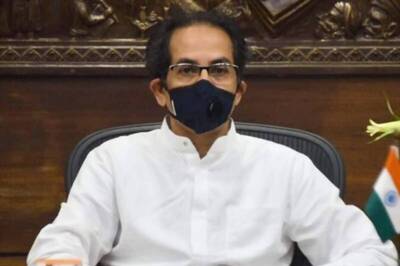
views
Surrogacy was back in the news after celebrity Priyanka Chopra announced the birth of her daughter via a surrogate mother. The concept of having a baby through surrogacy is usually linked to celebrities.
A person who hasn’t yet faced an incurable infertility issue may not know that thousands of Indian couples from humble backgrounds resort to the option of having their own biological child via a surrogate mother every year.
For couples who were planning to opt for it, the New Year started on a dismal note, as India banned commercial surrogacy, apart from introducing several other regulations.
Overall, the move was appreciated as the government touted the Bill as a progressive move to curtail the exploitative practice of “baby outsourcing”.
While the government claims to have regulated the surrogacy market by making it non-commercial, the ban will make it an even more crooked, clandestine process, something similar to the kidney donation market in India.
Imagine: Why would a random woman undergo a painful process of injecting, nurturing and delivering someone else’s baby for free? Under the new rule, only medical expenses and insurance cover can be provided.
Before the ban, surrogate mothers – on an average payment of over Rs 5 lakh for carrying a pregnancy to term – used the money to clear their debts or build a home or finance their children’s education, among other necessities.
THE WAIT GETS LONGER
Starting 2014, India was discussing the possibility of shutting down the surrogacy market. In 2015, it banned commercial surrogacy for foreigners. In 2022, for Indian citizens as well.
While the move was in discussion for several years and was not abrupt or surprise, why is the government not yet ready to roll out the ‘newly regulated process’ for the couples or intended parents to file applications before the state boards?
Even the state and central boards, which will accept or reject the applications of the intended parents, are not yet constituted and the selection process is still being chalked out. The policy and laws, too, are being fine-tuned.
The Indian Council of Medical Research (ICMR) is at the helm of affairs.
Sources in the central government indicate the entire procedure of forming the panels, appointing the members, creating registries of surrogates, egg and semen donors, creation of egg and semen banks, among other ecosystem creation, may take “at least a year or so”.
The wait seems to be getting longer for those who have already waited for years to embrace parenthood.
LOOSE ENDS OF THE POLICY
Men are not allowed to have a child: According to the new rules, only widowed or divorced women between the ages of 35 and 45 are allowed to opt for surrogacy, not single men. This clause inserts gender bias and makes the policy regressive. With a complete background check, both genders should be given an equal opportunity to embrace parenthood.
Overseas Citizens of India (OCI) cannot opt for surrogacy: The policy requires both intended parents to be Indian. For instance: An Indian woman aged 35-45 married to a British man cannot have a child via surrogacy in India. In short, if you divorce the British man, then you are better off to have a child in India. Such is the law.
While OCI holders are motivated to invest in India, strangely, the policy restricts them from having a child via surrogacy here.
“There were several OCI couples who were promised the same rights as Indian citizens, however, with this blanket ban, the widespread Indian diaspora has been left in the lurch,” Gaurav Wankhede, CEO of Become Parents Global Surrogacy, an agency that works with clinics and surrogates across the globe, told me.
Only seven oocytes can be retrieved in one cycle: According to the rules, not more than seven oocytes (developing eggs) should be retrieved from the female egg donor.
Several gynaecologists and embryologists I spoke to, explained that it’s not how biology works.
Putting a figure like this – ‘seven’ oocytes – shows the government needs to hire more professionals to guide them in the policy making process.
The policy should direct or regulate actions, but cannot regulate the results. For instance: Clinics can stimulate the egg donors by injecting hormones/injections “X times” – this can be regulated.
But how many oocytes can be generated or retrieved is a result, and hence can?t be regulated.
“No one can guarantee how many oocytes we will be able to retrieve,” said Dr Sukhpreet Patel, Mumbai-based IVF specialist and fertility consultant.
Absence of IVF specialists: IVF experts should ideally be a part of boards – central and state level – consulting the intended parents. Surrogacy requires a lot of skills required in IVF procedure – retrieving eggs from the intended mother, creating embryos in labs and implanting the embryo on the lining of the surrogate to achieve the pregnancy.
On the technical and medical front, IVF experts will be able to consult the intended parents better, who, as per the policy, will showcase the medical reasons for opting for surrogacy. However, bringing them on board won?t be an easy job.
If IVF experts are involved in the panels, conflicts of interest can arise if they are parallelly running private IVF clinics.
To see through thousands of applications these boards will receive, the government will need multiple IVF experts who are ‘not’ involved in private practice.
“IVF is a lucrative industry; those working in the industry earn handsomely. I am not sure if those people would like to join government boards and give up their private practices,” Patel, an expert from Mumbai, explained.
The only other option is involvement of gynaecologists with no IVF experience, which is far from ideal.
CONTRACTS IN DISTRESS
On January 25, Indian clinics stopped undertaking the procedure for new couples or intending parents.
The government has set a deadline of November 25, 2022 to deliver the babies whose contracts for surrogacy procedure were signed before January 25.
While some cases will be closed within the given timeline, there will be a lot of surrogates who will not be able to deliver by then and there is a possibility of missing the deadline set by the government.
The reason is the lengthy and time-consuming procedure to achieve pregnancy in surrogates.
For instance: After a few weeks of embryo transfer to the surrogate woman’s body, an ultrasound is conducted to check if the pregnancy has been achieved or not. If not, the doctors have to start the procedure all over again.
“Every couple who is willing to embrace pregnancy takes around six months to achieve positive results,” said Dr Rita Bakshi, IVF and surrogacy specialist.
“In some cases, conception is done, but the cardiac activity disappears at 12 weeks of pregnancy, or other complications arise and the procedure may get prolonged.”
“Is it fair to induce the surrogates into early labour or deliver the babies before their due dates? It is totally unfair! The government must extend the deadline from November 25 to another six months so that all cases that were booked before January 25 are well taken care of,” said Bakshi, who runs a popular IVF and surrogacy clinic in South Delhi.
In such cases, how can a doctor assist the couples who have made payments in lakhs before the announcement of surrogacy laws? No provision has been made for it.
The process involves unborn babies, pregnant surrogates and emotionally and financially burdened parents undertaking this procedure costing Rs 15-20 lakh. The government should have been more careful in designing the plan to close down the industry and protocol to wrap up the ongoing cases.
Cutting the long story short: Despite the new law, the couples, due to social and emotional pressures, may still look for ways to have a child. And when there is demand, but no legal supply, the market goes underground.
Read all the Latest India News here



















Comments
0 comment